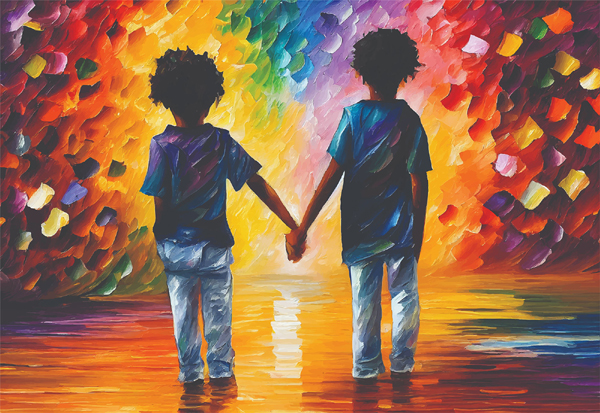
Art has always been a powerful medium for self-expression and reflection of the world we live in. It is through art that we can challenge societal norms and explore different perspectives. However, for many years, the art world has been plagued by a lack of diversity and inclusivity. Efforts are now underway to change this narrative, with initiatives focusing on representation, equity, and cultural inclusivity. This article will delve into the importance of diversity in art, the barriers faced by underrepresented artists, and the initiatives that promote inclusive art spaces.
Representation: Transforming Narratives
Representation in art is crucial. It allows individuals from marginalized communities to see themselves reflected and celebrates the diversity of the human experience. Historically, many groups, including women, people of color, LGBTQ+ individuals, and people with disabilities, have been underrepresented in the art world. This lack of representation perpetuates narrow cultural narratives and reinforces stereotypes. By promoting diversity, we can challenge these biases and create a more inclusive platform for artistic expression.
Equity in the Arts: Breaking down Barriers
Equity in the arts is about creating fair opportunities for all artists, regardless of their background. Socioeconomic disparities often hinder marginalized artists from pursuing their passion. Limited access to resources, education, and networks creates barriers that prevent underrepresented artists from fully engaging in the art world. Art organizations and institutions are recognizing the need to address these inequities and are taking steps to level the playing field.
Cultural Inclusivity: Embracing Different Perspectives
Cultural inclusivity in art recognizes the importance of incorporating a variety of cultural backgrounds, traditions, and perspectives. This inclusivity fosters dialogue, understanding, and appreciation for diverse cultures. By allowing different voices to be heard, we can challenge dominant narratives and promote a more nuanced understanding of the world. Cultural inclusivity empowers artists to delve into their heritage, connect with their roots, and create powerful art that resonates deeply with communities.
Art Diversity Initiatives: Paving the Way for Change
Art diversity initiatives play a vital role in promoting equality and inclusivity in the art world. These initiatives aim to dismantle systemic barriers and provide opportunities for underrepresented artists. One prominent initiative is the Art for Equity Program, which focuses on mentoring and supporting emerging artists from marginalized backgrounds. The program provides resources, grants, and mentorship, enabling artists to further develop their skills and thrive in the art community.
In addition to supporting individual artists, art institutions are also taking steps to promote diversity and inclusion. Many museums and galleries are actively diversifying their collections and exhibitions. They are working to feature a broader range of artists and exploring art forms that are traditionally overlooked. This shift in focus ensures that diverse voices are represented and celebrated, ultimately enriching the cultural landscape.
The Role of Artistic Expression in Identity Formation
Artistic expression serves as a powerful tool for identity formation. It allows individuals to explore and express their personal experiences, beliefs, and cultural heritage. For underrepresented artists, art provides an avenue for reclaiming narratives and challenging societal expectations. By embracing diverse artistic expressions, we create a society that values and respects different identities and experiences.
Creating Inclusive Art Spaces: The Role of Museums and Galleries
Museums and galleries play a crucial role in creating inclusive art spaces. These institutions are increasingly recognizing their responsibility to ensure that their spaces are welcoming and accessible to all. They are rethinking their exhibition layouts, curatorial practices, and outreach strategies to engage with a broader audience. Collaborations with local communities, cultural organizations, and artists, are also becoming more common, allowing for a more inclusive curation process.
Additionally, art organizations are actively addressing issues of accessibility. They are making efforts to accommodate individuals with disabilities by ensuring wheelchair access, providing audio and visual descriptions, and offering braille labels. By removing physical and communication barriers, everyone can engage with art and fully participate in the art world.
Diversity and inclusion in the art world are critical for fostering creativity, challenging societal norms, and ultimately creating a more inclusive society. By promoting representation, equity, and cultural inclusivity, we can empower underrepresented artists to share their narratives and ensure that a multitude of expressions is celebrated. Art diversity initiatives, along with museums and galleries, are at the forefront of this movement, actively working to create inclusive spaces and break down barriers. Let us embrace diversity in art and amplify the voices that have long been silenced. Together, we can build an art world that truly represents the richness of human experiences and perspectives.
























